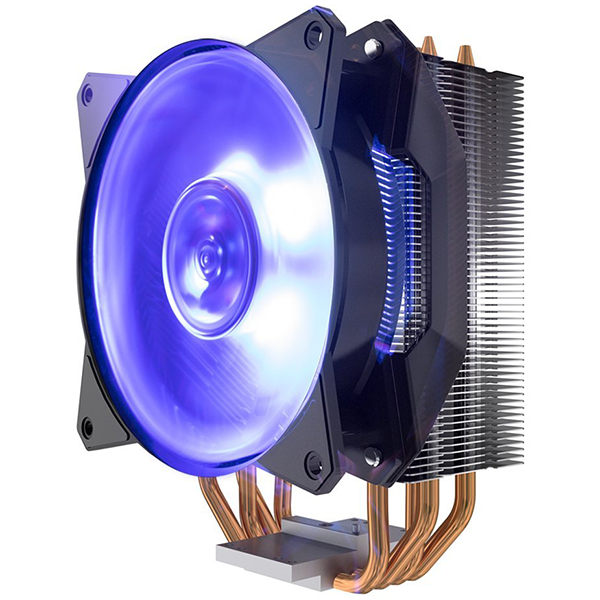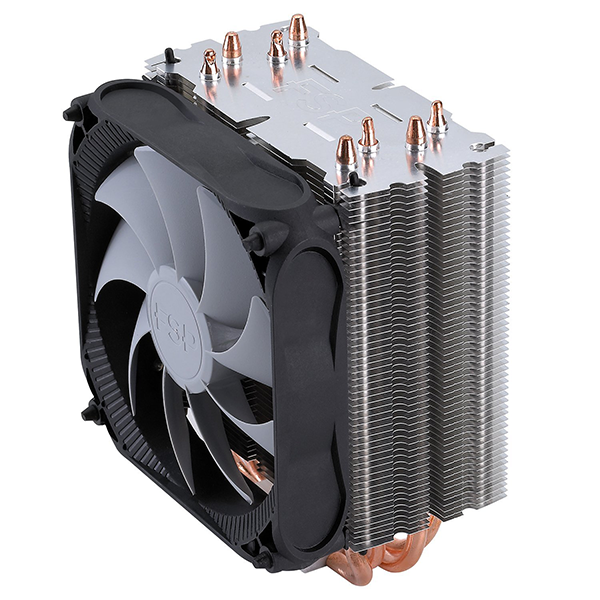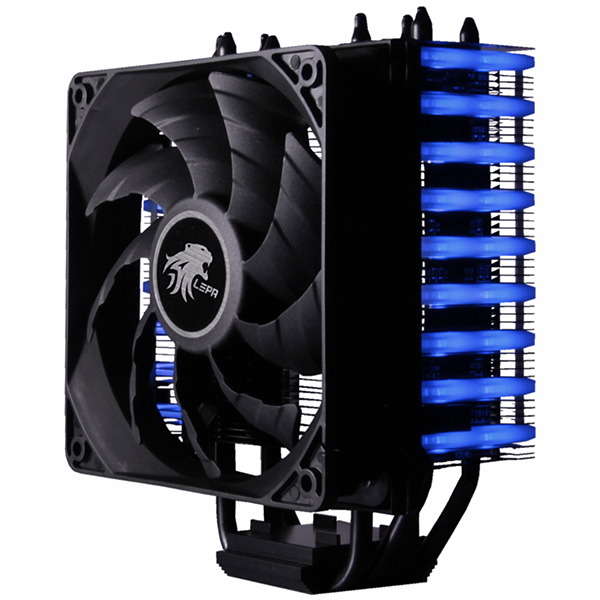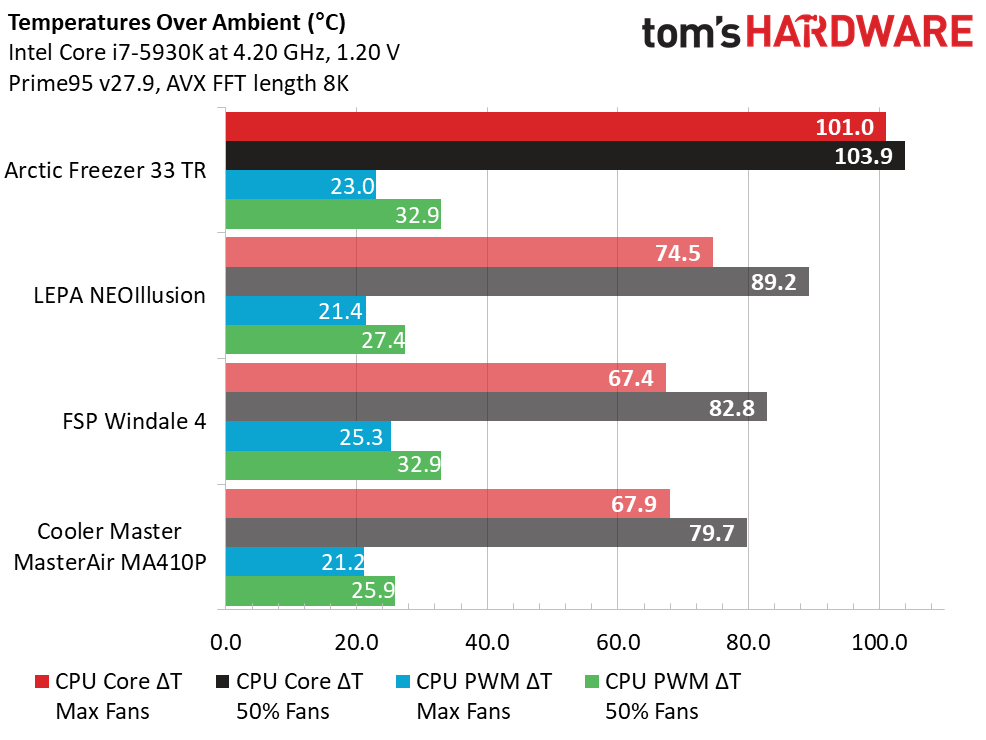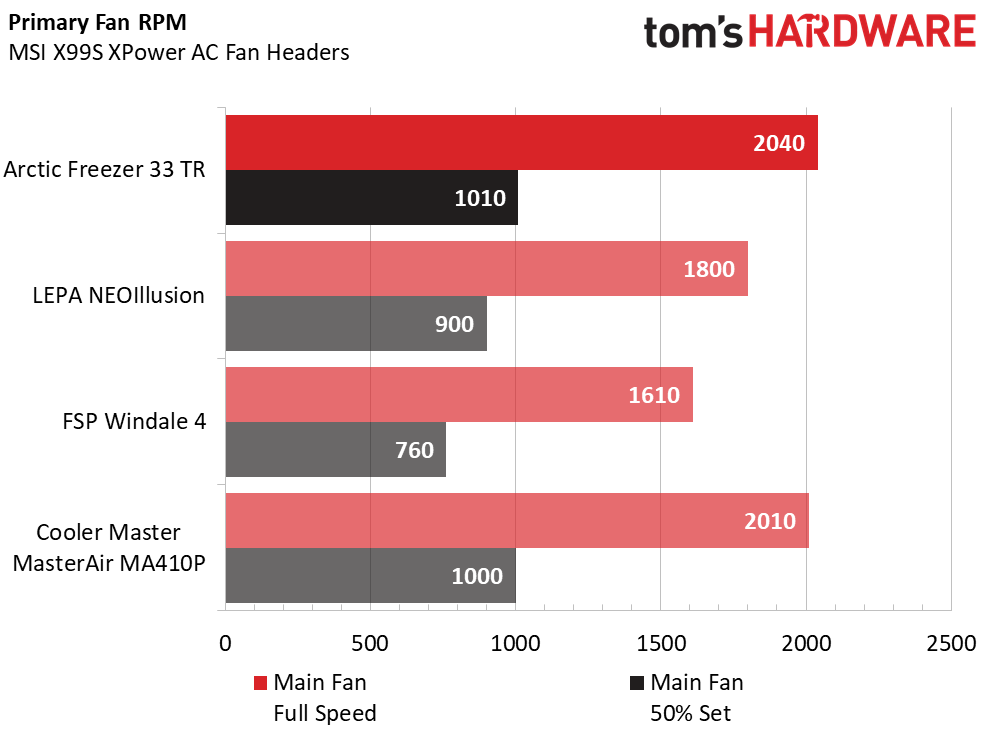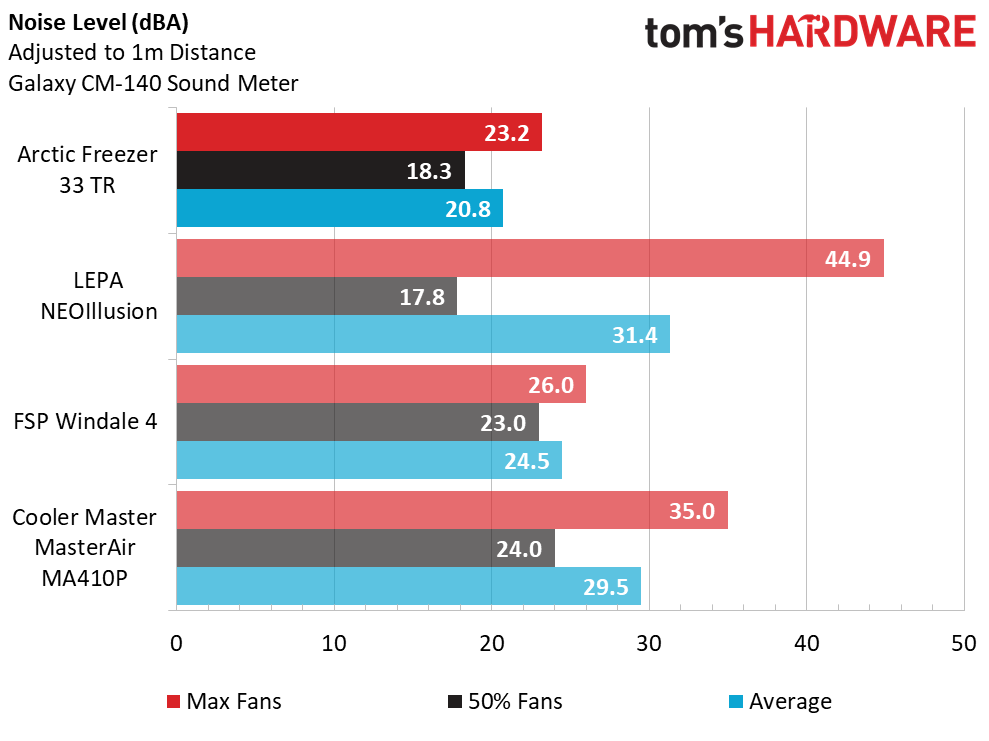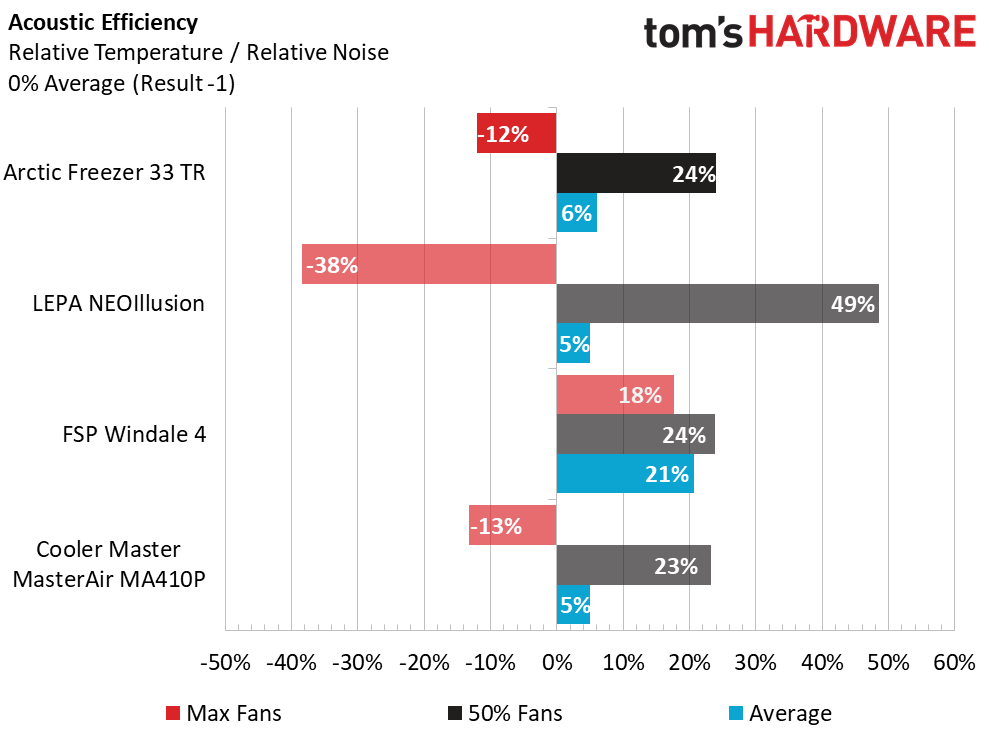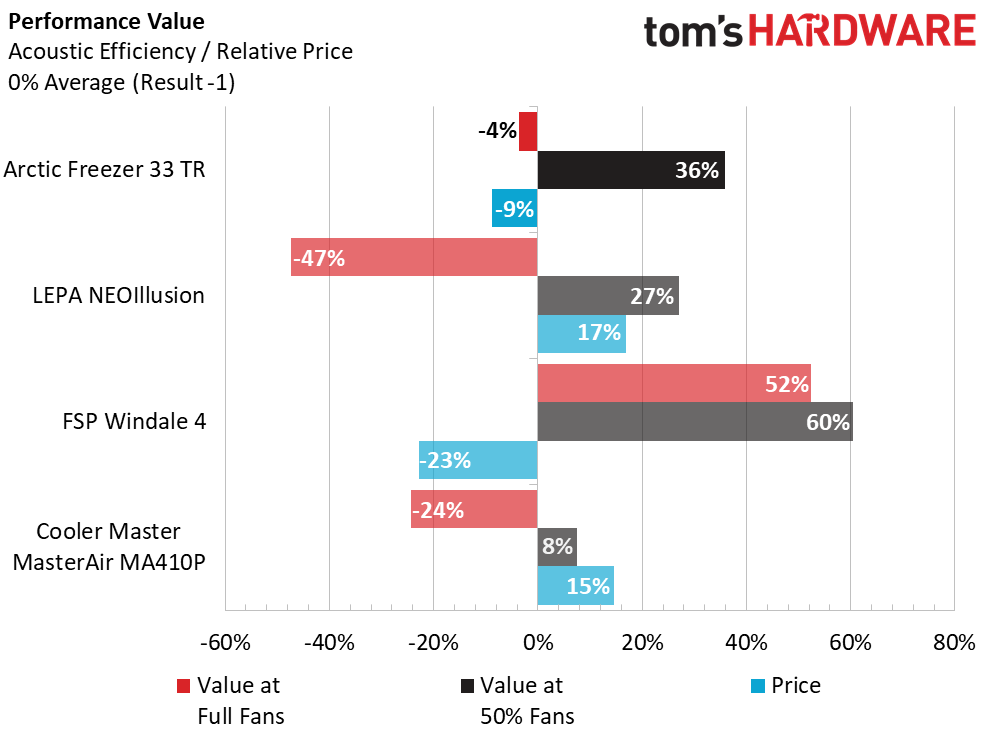Arctic Freezer 33 TR CPU Cooler Review: Breezy & Quiet...for Threadripper?
Why you can trust Tom's Hardware
Comparison Coolers, Testing Results & Conclusion
For our comparison testing, we utilize data from standardized testing methods collected during prior CPU cooling reviews on our six-core Core i7-5930K running at 4.2GHz and 1.20V. Testing data collected throughout our benchmarking of the Arctic Freezer 33 TR was compared with that of three other competing coolers for our comparison: the Cooler Master MasterAir MA410P, the LEPA NEOIllusion, and the FSP Windale 4.
Right away, we can see some red flags with the thermal loads of the Freezer 33 TR. Load temperatures greater than 100°C on our test system tend to cause a lot of concern here in the lab, and rightly so. At the temperature loads over ambient that our six-core Core i7-5930K was being exposed to, it began to thermally throttle. So, we unmounted, re-seated, and re-tested the cooler three more times just to make sure there was not an issue with the mount, the thermal-paste application, or any other user error. Because the Freezer 33 TR was specifically engineered to support CPUs ranging from four to 16 cores, that raised some eyebrows with our testing sample.
The Freezer 33 TR turned in the highest fan RPM of the testing group, albeit just barely. While Arctic rates its BioniX F120 fan for between 200-1800 RPM, we saw the fan spin up just over 2000 RPM, sustained, when giving it power. While we are seeing that neither the full-speed nor the half-speed thermal load temperatures seemed to benefit from having the highest blade-rotation speeds, it did help our motherboard voltage regulators and surrounding hardware due to the airflow.
Having the fastest fan speed typically means having higher noise levels, but in this scenario, it wasn’t the case. The Freezer 33 TR slipped quietly below the other coolers in the test comparison with a whispery set of full-speed and half-speed values.
Accounting for relative thermal load performance and noise levels, the Freezer 33 TR still posted a negative value under full-speed fan loads, but it did manage to hit around the middle of the testing group at half-speed and average values. The incredibly quiet fan really helps the cooler gather itself again and present some impressive numbers.
Things took a turn for the unexpected, though, on our Performance Value chart above, as we introduced this unit pricing to the overall comparison. The Freezer 33 TR fell a few dollars below our group cost average with a current MSRP of $39. The surge at 50% fan speed makes a strong, last-minute showing, due to the incredibly low decibel readings and the low unit cost.
We often say that our charts speak volumes but never tell the entire story. This is again true with the Arctic Freezer 33 TR. The initial thermal-load values were some of the highest we’ve seen for quite some time, which led us to wonder if there is truly an issue with Arctic’s design of the Freezer 33 TR, or if we simply got a sample that had a subpar heatpipe system. The build quality of the cooler is visibly top-notch. Once installed, the Freezer 33 TR is a handsome, mid-size tower that has a custom, aftermarket look for any PC case.
Get Tom's Hardware's best news and in-depth reviews, straight to your inbox.
That said, it is difficult to pinpoint where the Arctic Freezer 33 TR belongs, and where it should be placed. It is designed specifically for enthusiast systems boasting CPUs that scoff at having "only" four cores, yet it struggled to cool our six-core Core i7 5930K. Its elongated heatpipe contact area is meant primarily for covering the football-pitch length of the newer AMD Ryzen Threadripper CPUs, but it does allow the cooler to sit squarely over the primary CPU dies of our Intel test system. So while it might be market-focused on AMD’s TR4 socket, it does fully support the Intel 2066 and 2011-v3 by providing adequate heatpipe coverage and contact, but not for all other common Intel or AMD sockets.
MORE: Best CPU Cooling
MORE: How To Choose A CPU Cooler
MORE: All Cooling Content
- 1
- 2
Current page: Comparison Coolers, Testing Results & Conclusion
Prev Page Features & Specifications
Garrett Carver is a contributor for Tom’s Hardware, primarily covering thermal compound comparisons and CPU cooling reviews; both air and liquid, including multiple variations of each.
-
derekullo If the cooler fails at cooling then nothing else matters ...Reply
Being quiet has no bearing if the cpu is thermally throttling or even dying.
Unless there was something wrong with the cooler being tested, this also has no chance of cooling any of the Threadrippers with a 40 watt higher tdp
I'm curious how this would fair on a chip with a lower tdp, like an 8700k.
https://www.amd.com/en/products/cpu/amd-ryzen-threadripper-1900x#product-specs
https://ark.intel.com/products/82931/Intel-Core-i7-5930K-Processor-15M-Cache-up-to-3_70-GHz
https://ark.intel.com/products/126684/Intel-Core-i7-8700K-Processor-12M-Cache-up-to-4_70-GHz
Comparing the i7-5930k to the i7-8700k does show some remarkable progress, even if it was prodded by AMD.
Both 6 core, 12 thread i7s, but with the new one turbo'ing 1 gigahert higher than the old one and using 45 less watts to do so.
Suddenly my i7-4930k feels inadequate, also a 6 core 12 thread. lol. -
zodiacfml Considering the TR CPU lid is really large, it allows for maximum cooling potential of the heatsink. This heatsink easily shows its limits. It looks like a CM 212 Evo.Reply -
FD2Raptor So somehow some design changes to support Threadripper and one less fan can result in ~44 degrees difference?Reply
http://www.tomshardware.com/reviews/arctic-freezer-33-esports-edition-cpu-cooler,5422.html
I'd say this result is more likely from manufacturing defect. -
80-watt Hamster Reply20795268 said:Compared to 3 coolers I've never heard about....why?
The LEPA caught me out as well, but Tom's has been using the CM and FSP coolers as comparison points for awhile now. -
rubix_1011 The coolers used for comparison were chosen due to similar size, design and price point.Reply -
wurkfur Here's a novel idea. Test it on the Threadripper it was designed to be placed on. The Intel compatibility was an afterthought. They didn't widen the baseplate for Intel.Reply -
rubix_1011 The cooler is compatible with Intel sockets 2011v3 and 2066, meaning it supported our standard CPU cooler testing system, which is what we use for all standardized testing. However, most CPU coolers also have AMD AM4 or Intel 115x support but we do not test on those platforms, even though coolers do support them.Reply
Yes, it was designed to also fit Threadripper and we do now have a TR4 system for dedicated TR4 cooler tests, but this cooler was shipped to us for testing a few months ago prior to having the AMD TR4 build.
The base of this cooler also does not fully cover Threadripper, either. It is designed by Arctic to only cover the IHS above the CPU cores below. They illustrate this in one of their images for clarity. (see about 1/3 down the page under "Maximum Performance for Highest-End CPUs")
https://www.arctic.ac/us_en/freezer-33-tr.html -
ryandsouza Can you guys fix the review links for the other coolers? They're pointing to this review itself.Reply
That's a good looking cooler, but useless with this kinda performance. I hope it's an issue with the review unit. -
rubix_1011 You are correct and I sent this on to editing. However, I am thinking that since these reviews aren't officially published yet, the links don't yet exist. I only know this because I also reviewed the other coolers in the comparison. :)Reply
